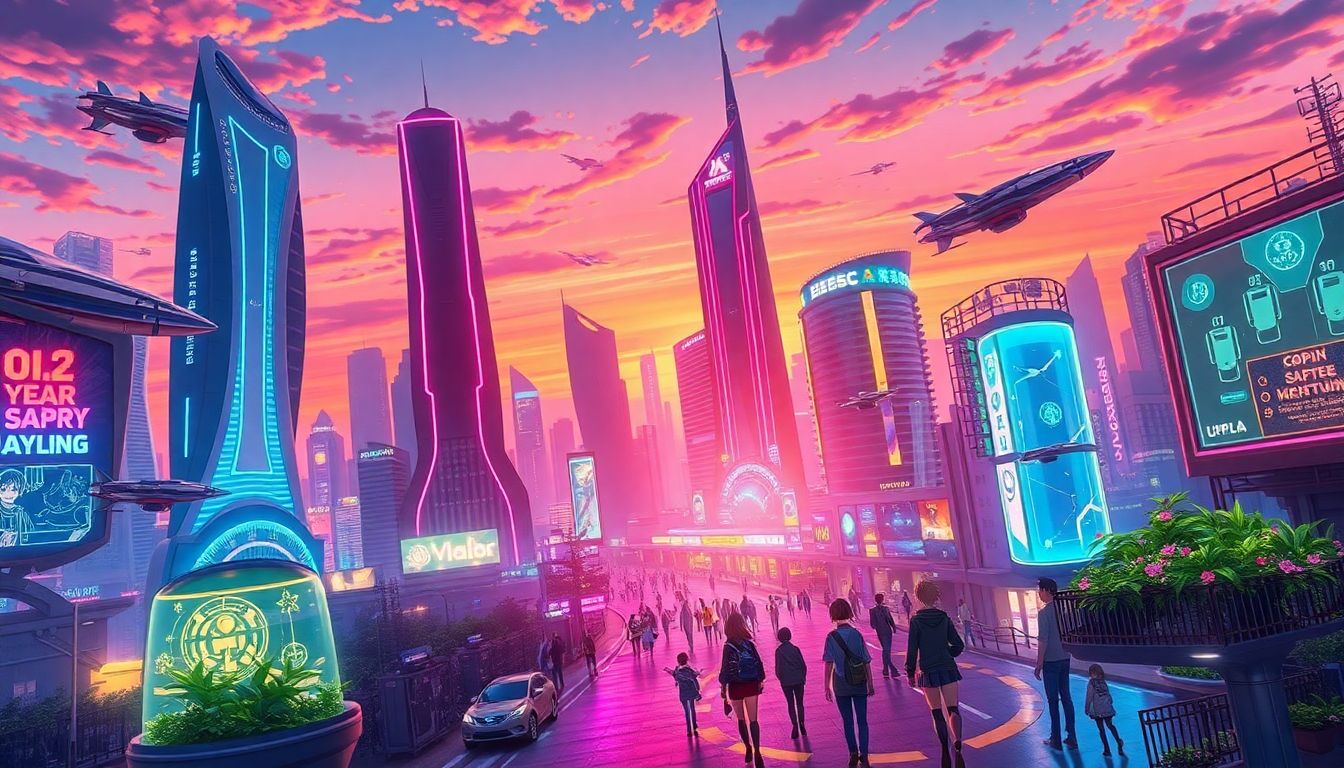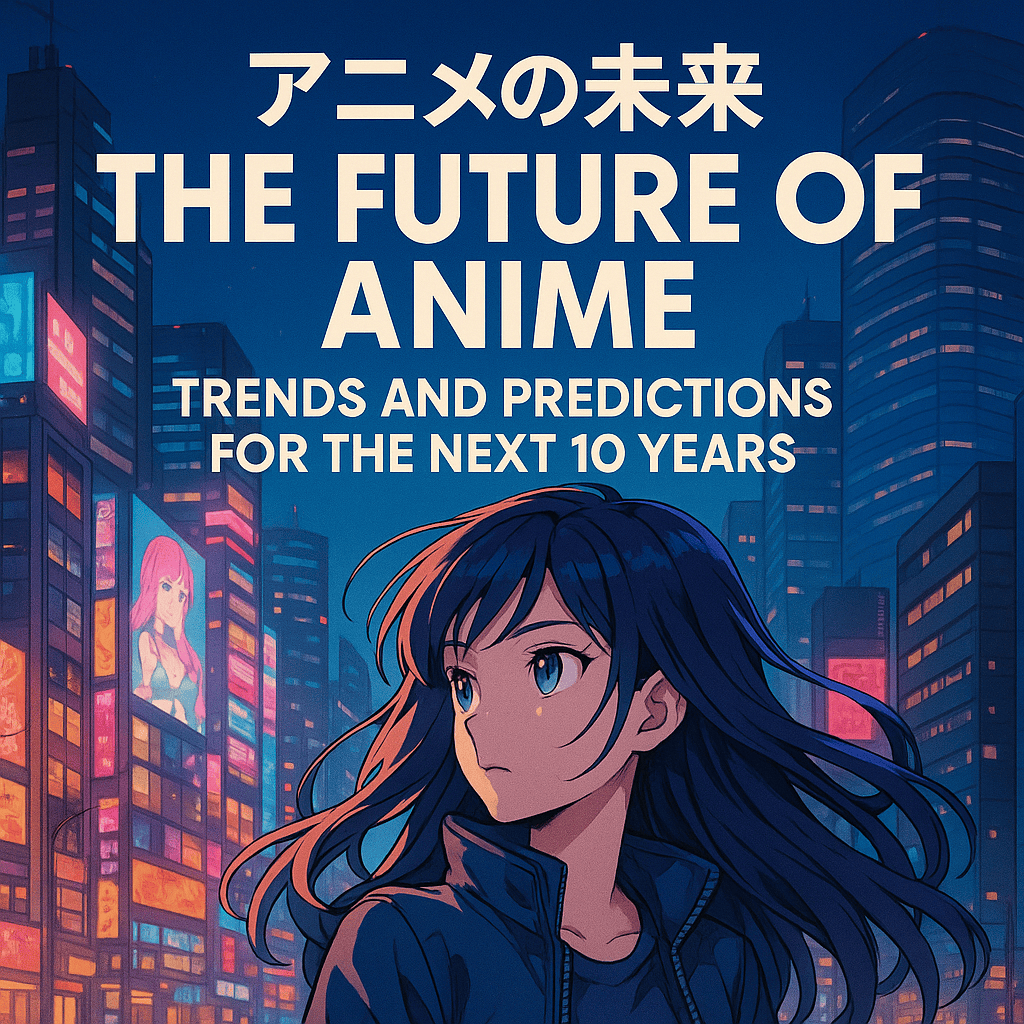Introduction
Anime has seen amazing growth over the past decade. From streaming hits to global fans, it’s now part of everyday pop culture. Fans, creators, and industry insiders all want to know what’s coming next. Technology, new stories, and changing habits are shaping the future. This article covers the biggest trends to watch for in the next ten years. Whether you're a fan, a creator, or just curious, these predictions will help you understand what’s ahead.
The Evolution of Anime Production and Technology
Advancements in Animation Techniques
Animation tools keep getting better and faster. Technologies like CGI, motion capture, and 3D modeling help make scenes look more real and exciting. For example, hit shows like Attack on Titan and Demon Slayer use new tech for intense action scenes. Future anime will likely combine traditional art with high-tech visuals to create even more immersive worlds.
The Rise of Artificial Intelligence in Content Creation
AI is starting to play a role in making anime. It can help with scripting, character design, and animation. This speeds up production and cuts costs. With AI, creators might even craft personalized anime stories or adapt shows just for individual viewers. Imagine getting an episode made around your favorite character or theme!
Impact of Virtual and Augmented Reality
VR and AR are changing how fans experience anime. Picture watching a show inside a VR anime room, or using an AR app to see characters in your real world. Some companies are already testing VR viewing rooms, giving fans a new way to feel like they’re part of the story. This tech brings fans closer to their favorite shows than ever before.
Industry Growth and Market Expansion
Global Market Trends and Audience Demographics
Anime isn't just a Japanese thing anymore. It’s growing fast in North America, Europe, and across Asia. Streaming platforms see a big rise in subscriptions from new markets. Young audiences love anime, and older fans are also joining in. The worldwide community keeps expanding, making it one of the fastest-growing entertainment genres.
Streaming Platforms and Content Accessibility
Platforms like Crunchyroll, Netflix, and Disney+ now offer huge anime catalogs. They make it easy for fans everywhere to watch their favorite shows in many languages. This accessibility pushes anime into homes worldwide, breaking down barriers of language and location. Expect even more regional releases and subtitles in the future.
Investment and Collaboration Trends
Japanese studios are teaming up more with Western companies. Big projects often involve co-production efforts, bringing diverse ideas and broader audiences. For example, Demon Slayer became popular beyond Japan with international funding. These collaborations will boost quality and creativity and help grow anime globally.
Cultural Trends and Content Evolution
Diversification of Themes and Genres
Anime isn’t just about action anymore. Is a favorite everyone’s love for genres like isekai, slice-of-life, and sci-fi. Creators now focus on stories about social issues, identity, or inclusion. The variety will keep growing and attract more diverse fans, making anime richer and more relatable.
Influence of Fan-Generated Content and Community
Fans are shaping anime culture, creating anime-inspired art, memes, and stories. Cosplay and fan conventions help spread this culture worldwide. Fan communities stay connected online, fueling new ideas. This kind of engagement makes anime more interactive and personal for everyone.
Cross-Cultural Impact and Global Influence
Anime influences global fashion, music, and games. It’s not just entertainment but a style that impacts many industries. International adaptations, like live-action movies or international collaborations, will keep expanding. Anime’s worldwide appeal is helping it become part of daily life everywhere.
Future of Anime Creation and Distribution
Independent and Creator-Driven Content
More individuals are making anime on their own using crowdfunding or platforms like YouTube and TikTok. Short and experimental projects find their audience quickly. Indie studios can now share fresh ideas without big studio influence. This democratizes anime creation and fills the market with new voices.
Blockchain, NFTs, and Digital Ownership
Blockchain technology allows fans to own unique digital items, like character art or special scenes. Many anime franchises are exploring NFTs to connect with fans in new ways. Some projects sell limited edition collectibles that are rare and valuable, creating a new way for fans to invest in their favorite shows.
Strategies for Innovation and Sustainability
Anime makers are finding better ways to stay eco-friendly. This includes reducing waste and using sustainable materials. At the same time, they balance top-quality animation with cost-effective methods. This ensures anime can grow without sacrificing quality or damaging the environment.
Challenges and Opportunities in the Next Decade
Industry Challenges
Rising costs and a shortage of talented artists and writers pose hurdles. Protecting intellectual property from piracy remains a constant concern. These issues could hinder growth unless addressed properly.
Opportunities for Growth
New markets in Africa, South America, and Southeast Asia are waiting to explore. Anime can reach many new fans through new tech, personalized content, and regional stories. This creates big chances for expansion and innovation.
Expert Predictions and Industry Insights
Industry leaders believe the future is bright. They see anime becoming more global, more diverse, and more innovative. New tech and markets will keep pushing the boundaries of what anime can be.
Conclusion
The next ten years will reshape anime in exciting ways. Technology will make visuals more stunning and immersive. Stories will reflect more cultures, themes, and ideas. The industry will grow with new markets, collaborations, and innovations. Fans, creators, and investors can expect a future full of creativity and new adventures in anime. Stay tuned—anime’s next chapter promises even more unforgettable moments.



Comments ()